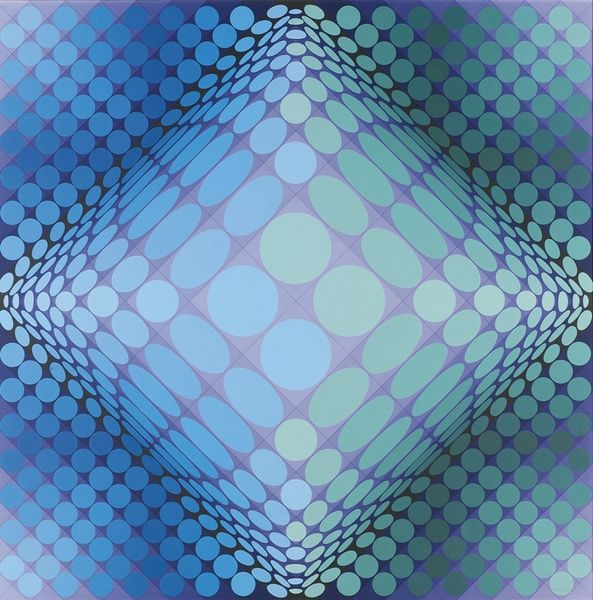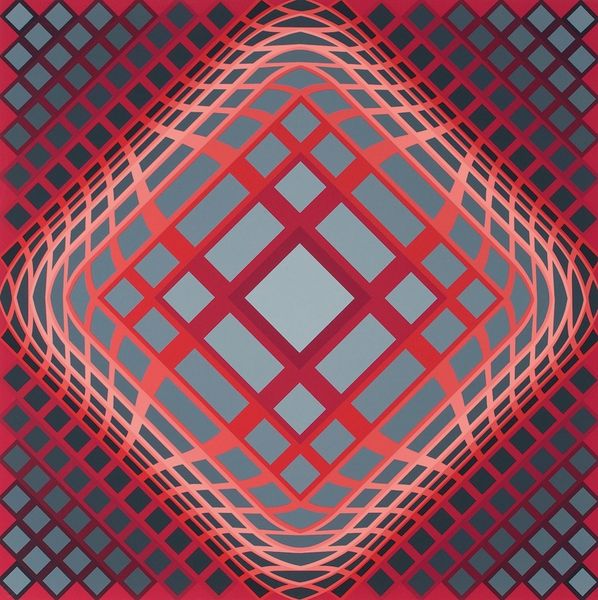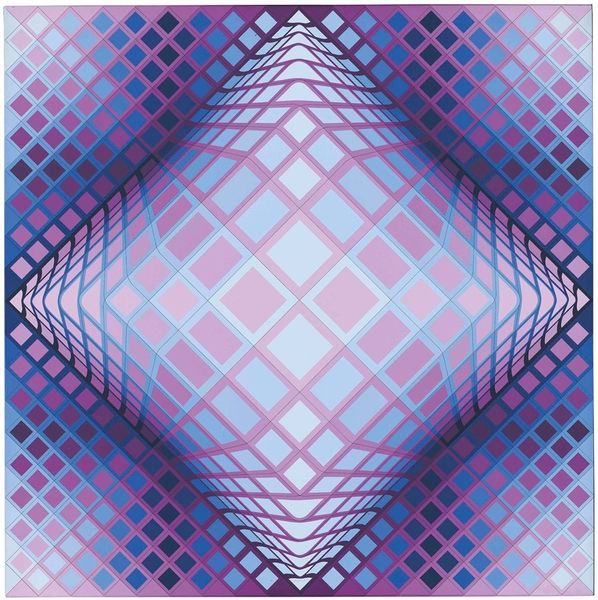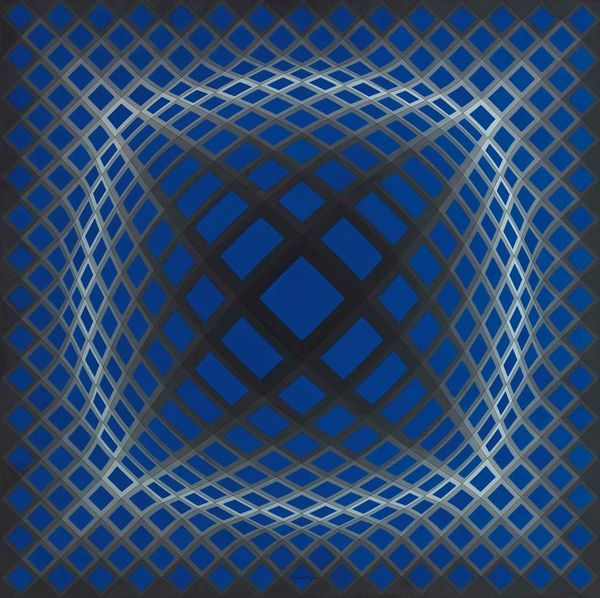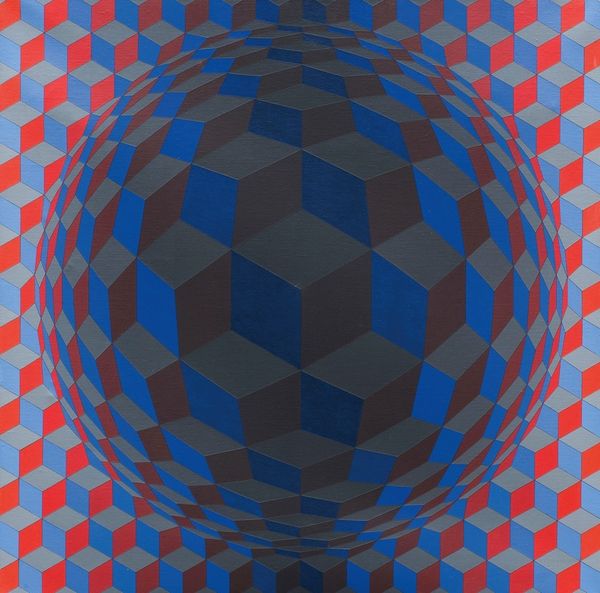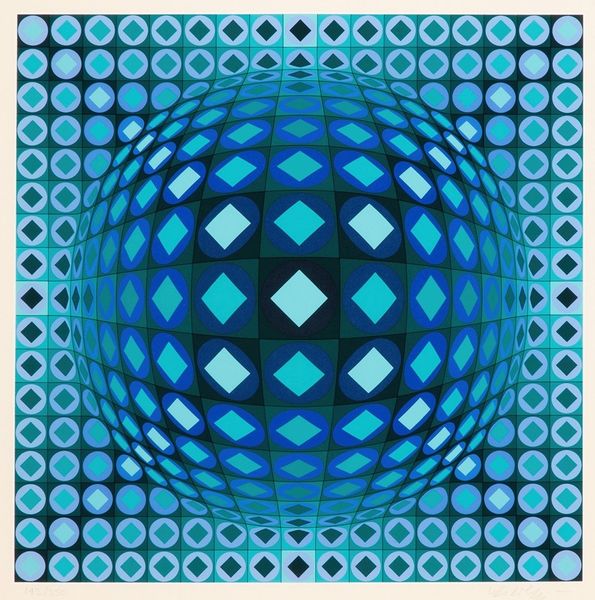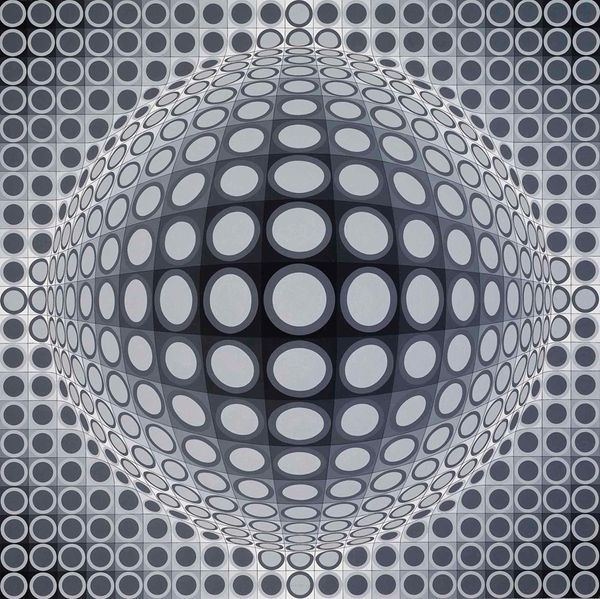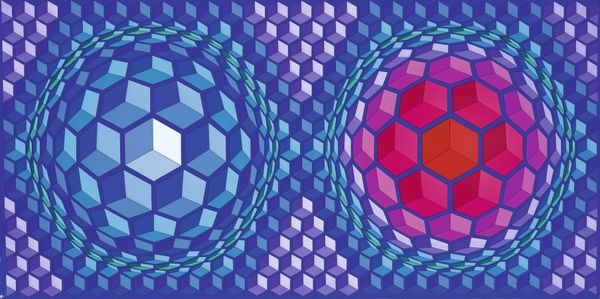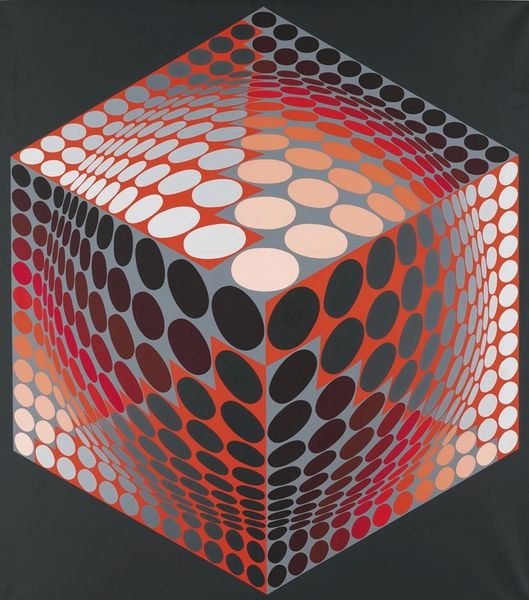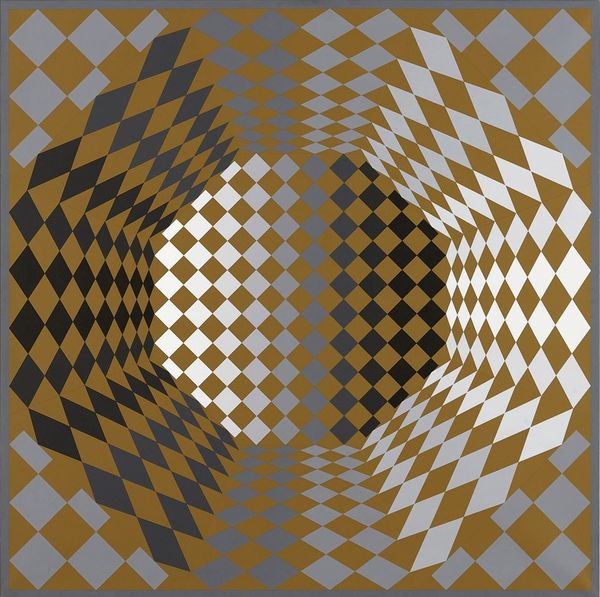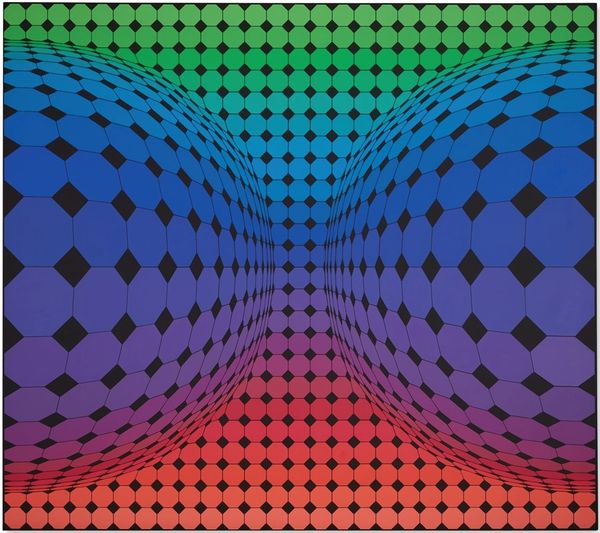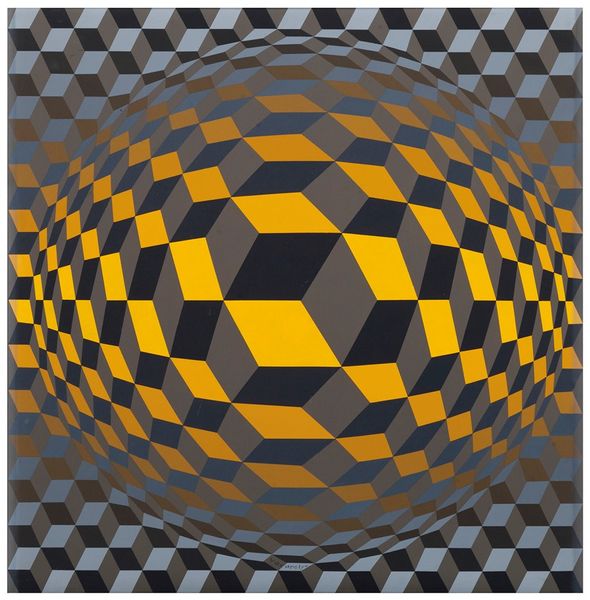
acrylic-paint
#
kinetic-art
#
op-art
#
postmodernism
#
pattern
#
acrylic-paint
#
abstract
#
geometric pattern
#
abstract pattern
#
geometric
#
abstraction
Copyright: Modern Artists: Artvee
Editor: Here we have Victor Vasarely's *Novae – RB*, painted between 1972 and 1974 using acrylic. It's mesmerizing! All these blue and gray circles create such an illusion of depth. What strikes you most about this piece? Curator: It’s precisely that illusion that I find compelling. Vasarely, a key figure in Op Art, consciously engages with the legacy of geometric abstraction while pushing against its historical boundaries. He sought to democratize art by making it accessible and reproducible, liberating it from the elite circles. Doesn't this repetition of geometric forms feel almost...industrial, almost mass-produced? Editor: Absolutely. It feels like a pattern you might see in a textile or even on a computer screen. I see how it could be mass produced. Curator: Exactly. And that’s deliberate! Consider the socio-political context. The 1960s and 70s were marked by technological advancements and a growing consumer culture. Vasarely responded to this by creating art that mirrored these changes, anticipating a shift in how we experience visual information. His work prompts us to question the traditional role of the artist, the nature of originality, and the very act of perception. Is what we are seeing real, or constructed? Editor: So it’s not just about creating an optical illusion, but about questioning the society that produced it? That's a very postmodern idea, in the spirit of questioning structures of power. Curator: Precisely. Vasarely's work encourages us to decode visual language, challenging the power dynamics inherent in artistic creation and consumption. It highlights that perception isn't passive; it's actively constructed. Editor: That gives me a completely different way of looking at it. I thought it was simply an interesting pattern, but there are ideas of commodification and democratization. Curator: Art often holds more than initially meets the eye! By investigating those tensions, we uncover fresh ideas within ourselves and in others.
Comments
No comments
Be the first to comment and join the conversation on the ultimate creative platform.
